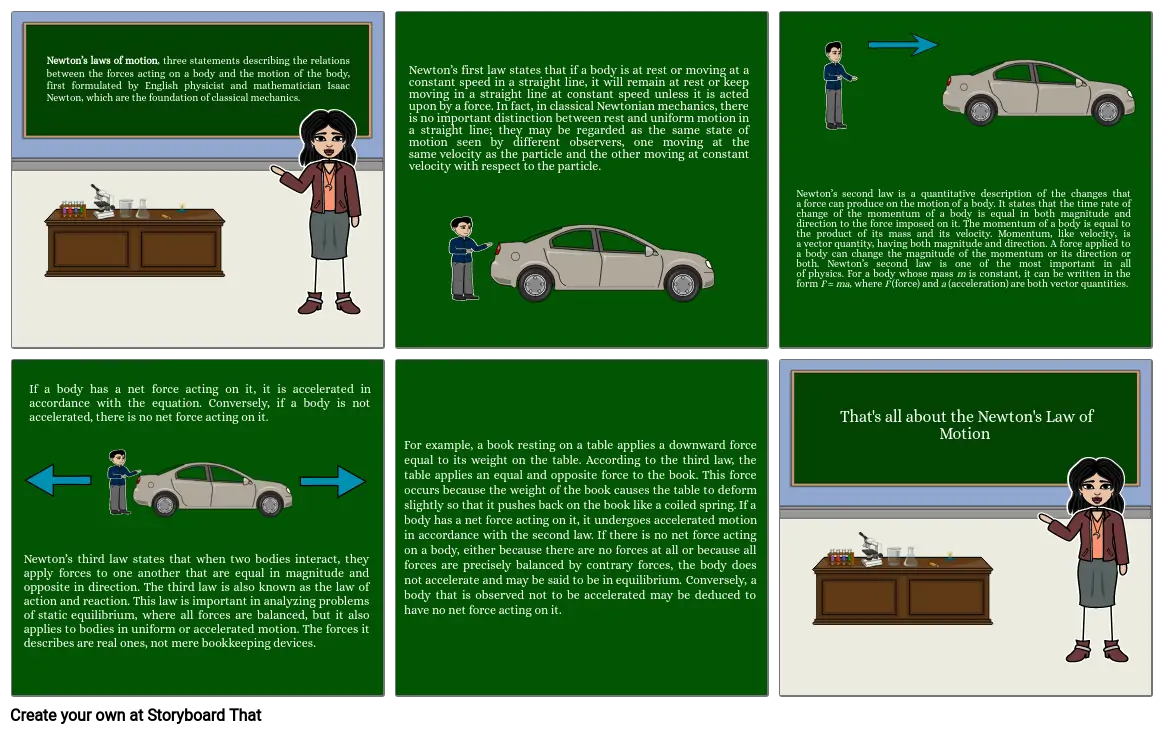LMS 07 Activity 2 Laws of Physics

Текст на Статията
- Newton’s laws of motion, three statements describing the relations between the forces acting on a body and the motion of the body, first formulated by English physicist and mathematician Isaac Newton, which are the foundation of classical mechanics.
- Newton’s first law states that if a body is at rest or moving at a constant speed in a straight line, it will remain at rest or keep moving in a straight line at constant speed unless it is acted upon by a force. In fact, in classical Newtonian mechanics, there is no important distinction between rest and uniform motion in a straight line; they may be regarded as the same state of motion seen by different observers, one moving at the same velocity as the particle and the other moving at constant velocity with respect to the particle.
- Newton’s second law is a quantitative description of the changes that a force can produce on the motion of a body. It states that the time rate of change of the momentum of a body is equal in both magnitude and direction to the force imposed on it. The momentum of a body is equal to the product of its mass and its velocity. Momentum, like velocity, is a vector quantity, having both magnitude and direction. A force applied to a body can change the magnitude of the momentum or its direction or both. Newton’s second law is one of the most important in all of physics. For a body whose mass m is constant, it can be written in the form F = ma, where F (force) and a (acceleration) are both vector quantities.
- Newton’s third law states that when two bodies interact, they apply forces to one another that are equal in magnitude and opposite in direction. The third law is also known as the law of action and reaction. This law is important in analyzing problems of static equilibrium, where all forces are balanced, but it also applies to bodies in uniform or accelerated motion. The forces it describes are real ones, not mere bookkeeping devices.
- If a body has a net force acting on it, it is accelerated in accordance with the equation. Conversely, if a body is not accelerated, there is no net force acting on it.
- For example, a book resting on a table applies a downward force equal to its weight on the table. According to the third law, the table applies an equal and opposite force to the book. This force occurs because the weight of the book causes the table to deform slightly so that it pushes back on the book like a coiled spring. If a body has a net force acting on it, it undergoes accelerated motion in accordance with the second law. If there is no net force acting on a body, either because there are no forces at all or because all forces are precisely balanced by contrary forces, the body does not accelerate and may be said to be in equilibrium. Conversely, a body that is observed not to be accelerated may be deduced to have no net force acting on it.
- That's all about the Newton's Law of Motion
Над 30 милиона създадени разкадровки

